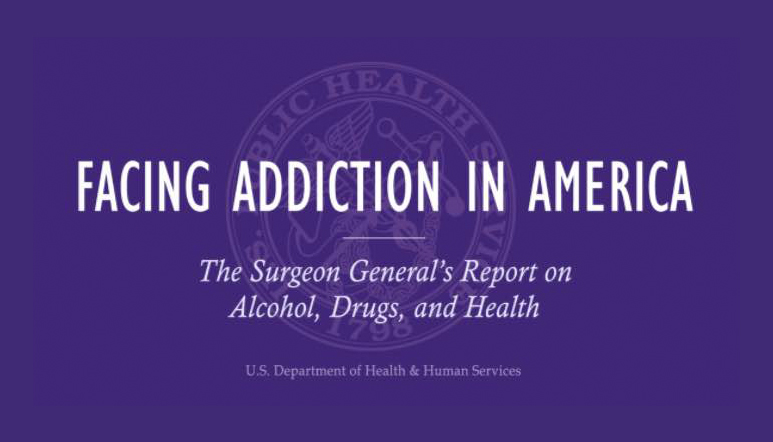
Fifty-two years ago, the first Surgeon General’s Report Smoking and Health was released, and it proved to be possibly the single most import publication in the history of public health. The findings in that report, about cigarettes and lung cancer risk, ushered in a new era of scientifically informed public awareness about the dangers of smoking, and began the downward trend in adverse health outcomes from tobacco that continues to this day. Smoking rates have been reduced by more than half since then; by one estimate, 795,000 deaths were prevented between 1965 and 2000 as a result of tobacco control programs inspired by that first Surgeon General’s Report.
Today marks, I hope, another turning point in our country’s health, as Surgeon General Vivek Murthy released Facing Addiction in America: The Surgeon General’s Report on Alcohol, Drugs, and Health. It is the first such report released by the Surgeon General on the health consequences alcohol and drug misuse, as well as what science tells us about how to prevent and treat drug and alcohol misuse and use disorders. NIDA, along with numerous federal partners including NIAAA, SAMHSA, and CDC have worked closely with the Surgeon General’s office over the past year to produce this landmark publication.
It comes at a time when the public and policymakers are clamoring for guidance on how to address addiction. Our country faces not only a devastating opioid crisis and epidemic of overdoses, but also increased mortality related directly or indirectly to alcohol misuse, as well as uncertainties about the health and safety consequences of increasing availability of marijuana. The new report compiles the best science on everything from the neurobiology of addiction to the most effective strategies for prevention, treatment, and recovery. It also highlights the importance of integrating addiction care into general medicine—a long-needed shift that has taken its important first steps under the Affordable Care Act.
The foremost point of the report is one that I and other addiction scientists have been making for many years but that has not yet adequately permeated the public consciousness: that addiction is a brain disorder, a medical issue involving real changes in brain circuits, requiring medical intervention. The science is clear, addiction is not caused by moral weakness; it is an illness, and people suffering with it need and deserve social compassion and evidence-based medical care, as would be provided for any other chronic relapsing disease such as heart disease or diabetes.
One of the themes running through the Report is that we already know how to reduce substance misuse and treat addiction effectively, but these strategies have not been widely or effectively implemented. There are numerous reasons for this, including insufficient resources, structural features of the healthcare system that are fortunately now shifting under healthcare reform, and attitudinal barriers. The failure to adopt and implement effective medications for opioid addiction is a prime example of the latter: Buprenorphine and methadone have been shown in study after study to reduce illicit opioid use and improve both health and life outcomes including employment, criminal justice involvement, and HIV risk. More recently, clinical studies have also documented the efficacy of extended-release naltrexone in the management of opioid use disorders. But persistent prejudice against pharmacological approaches has limited their adoption in treatment centers and in the criminal justice system, leading to untold unnecessary deaths and suffering. It is time to break down the barriers preventing effective addiction treatment, including medications, from reaching the millions of Americans who could benefit.
However, another important theme of the Report is the need to address the full spectrum of substance misuse as a health issue, not just addiction. Substance misuse, even when it is not compulsive and uncontrollable, may still be damaging to health. An example is binge drinking, which is reported by an alarming percentage of Americans and may be linked to a wide range of health issues as well as car crashes and violence. The vast, largely unaddressed problem of drug and alcohol use that is problematic but does not meet the criteria of an addiction must, going forward, be on the radar of all healthcare professionals when they see patients for annual checkups, in emergency rooms, and other contexts. Because of the impact of substance misuse and addiction on mental and physical health, as well as on compliance with medical treatment, proactively preventing and treating substance misuse at all levels has the power to improve health outcomes across the board.
The Report concludes with concrete recommendations for what healthcare professionals, policymakers and other stakeholders, communities, and families can do to help shift toward a society that fully recognizes substance misuse and addiction as a public health issue (and not a criminal justice issue) and that ensures the widest access to proven-effective prevention, treatment, and recovery supports.
I am proud to have been part of the team that produced Facing Addiction in America. For more information, and to download a copy of the report or the Executive Summary, please visit: http://addiction.surgeongeneral.gov/ .
